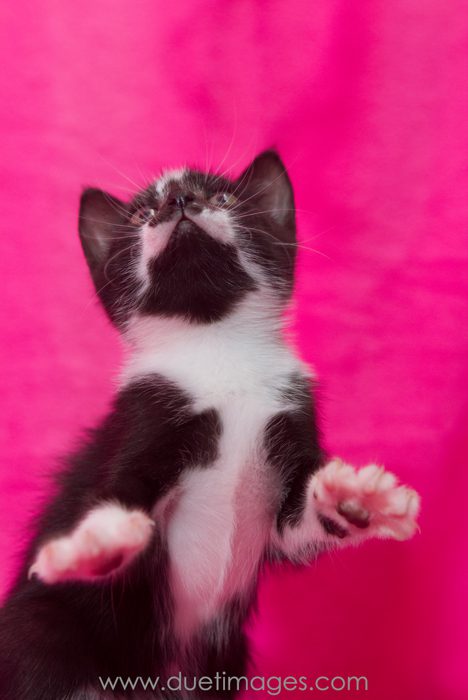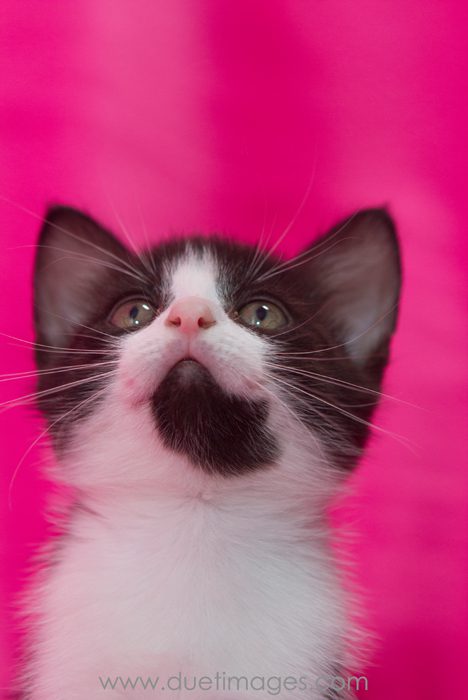Understanding Flexibility and the Self-Righting Reflex
I was originally going to write an article about our felines amazing ability to find a dark and narrow place. They seemingly disappear from view, only to walk out as if emerging from an impossibly tight space! However, after some thought, I realised that the acrobatic flexibility of a Cat is best understood not by boring anatomy. Instead this is by looking at their incredible ‘self-righting reflex’. It seems that most Cat ‘owners’ in Melbourne that we talk to during a photography session, have witnessed this amazing feat!
If we were all honest, we will recall times when we have not picked up a cat properly. We then find that when we try to lift them up, they squirm and wriggle their way out of our hands. Somehow they twist themselves through 180 degrees and land on the ground feet-first. This is without injury to anything other than ‘pride’.
Now to be clear, nobody advocates testing this. Of course it is not going to work all the time. After all, cats can injure themselves through misjudging a jump, or falling from a high place. As careful owners, we all remain vigilant with animals as much as with children. For example, we ensure that windows above ground level are only left open with great care. The fact remains however, that a cats’ innate flexibility is inextricably linked to their ability to find their balance.
In the wild, the need to hunt at speed means that agility is vital. The slightest change in direction of a prey means that the spine of a feline needs to be extremely supple. This means that it can arch it’s back into an almost perfect “U” shape. As people, some of us spend years in Yoga lessons, trying to achieve this level of suppleness. For cats, this comes naturally from kittenhood – and into their mature years.
The feline spine is itself flexible. Although the key to their ability to immediately change direction, is in the way that their shoulder blades are attached to their main skeleton. They are so loosely held in their ball-joints, that they can turn 90 to 180 degrees in less than a second. Coupled with their particularly thick and ‘spongy’ cartilage disks, the rest of their body can quickly follow the front shoulders. Having nearly twice as many vertebrae as us human also helps.
There is an odd side-effect of this flexibility. Evolution has resulted in Cats, Giraffes and Camels being the only animals in the world to walk with both their legs on each side (front and rear) in unison with each other! For the rest of us mere mortals; our legs alternate with each other to maintain balance. It is our Cats’ incredible suppleness in their spines that enables them to keep this sense of balance whilst moving.
But it is when a cat jumps or fall, that their flexibility really comes in useful. As soon as their ‘inner ears’ detect a potential imbalance, the spine instinctively bends in the middle, helping their front legs rotate at a faster speed to their rear legs. They then tuck their front legs to speed this rotation further. This is usually towards the direction in which they are falling. As soon as the front legs are in a vertical direction, they then pull in their rear legs. This speeds up rotation in their lower spine, towards the same vertical direction.
Effectively they are now ready to land. They simply relax their legs and spines one final time, and they are ready for soft-impact. To say this one of nature’s miracles would be an under-statement. This has undoubtedly contributed to the famous wisdom that “a cat has nine lives”. If only this were really true :o)
We have taken a lot of photographs of our ‘flexible furry feline friends’. Here are some of our more recent images from around the households of Melbourne.
The amazing story of your cats’ flexibility is perhaps best described on this very informative Wikipedia page – and in-particular, have a look at the animated drawing on the right-hand side of the page.
Cheers, Ross
Flexibility – Cat Photography Melbourne




